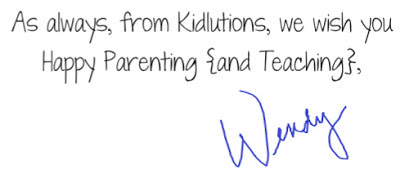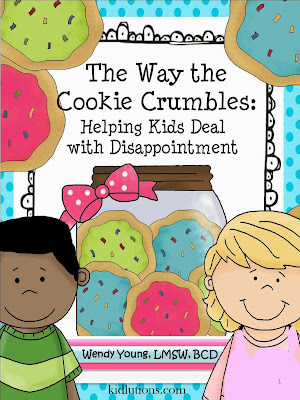Conflict, Anger and the Truth!
The Truth About Conflict and Anger
The truth about conflict and anger is that they are merely a part of life. They only have as much power over us as we let them. That's the short story.
Digging Deeper: It's Human Nature
If we dig a little deeper, we can see what's going on behind the scenes. Wherever two or more of us are gathered, there is bound to be conflict. It's human nature. It's also human nature to want to be understood, to feel like people "get us", to have our standpoint recognized and validated. To feel heard. When we can start to do this in our families and classrooms, as well as offer support and a chance to work things through, conflict and anger have less of a hold on us. They will rear their ugly heads less often and more peace and harmony can replace it. Really.
How do I know this is true?
Because I've seen it happen over and over again. Once parents understand the role of conflict and anger, once they look at it from a different perspective...once they can see them for what they really are, and lessen the grip they have...amazing changes can take place in families. It's not pie in the sky stuff. It's not feel-good, wishful thinking. It's backed by solid research and transformation for your family awaits in an easy read that is already being used in thousands and thousands of homes and classrooms.
We May Have Been Going About This All Wrong
It seems that as parents, and as a society as a whole, we strive to silence conflict and anger. We want to hide it in a back-room somewhere, as if it should be kept under wraps, obscured from everyone's view...and out of earshot. We see at as an ugly side of human nature, buts that's just because of what we ascribe to it. What if, instead, we started looking at anger and conflict as mere bits of information that something is amiss, and as a sign we need to right it?
Part of the reason we try to sweep anger and conflict under the carpet is because of the emotion it stirs up in us. We feel uncomfortable. We don't want to be inconvenienced with squabbles and disagreements. We aren't sure if we have what it takes to "make it all better", or at the very least, to "make it all stop". In some cases, we were never taught the skills in our own families, and maybe the sound of anger and conflict makes us want to run for the hills...or at least lock ourselves in the bathroom. And in some families, the anger and conflict just plays over and over like a broken record. It's exhausting.
The Fix
The fix is a three-step dance that has to be played over and over again, until it sinks in. Until it makes a difference. Until we are so practiced at it as a family or classroom, that it becomes our natural response. And that it how change occurs.
Here are the three steps:
1. Change what you say. What you say as a parent or teacher can amp up a situation or help it settle down. We have to choose our words wisely. What we say makes all the difference. Training for parents and teachers that quiets the defensive brain in children (and other adults) is just beginning to surface. Will what you say be like water on a grease fire or a more calming baking soda sprinkle? When handling a grease fire, there is a reason there are DO's and DON'Ts. It's the same with handling anger and conflict. When we apply the right intervention, better outcomes occur. At a loss for how to change up your words? This can help!
2. Change what you think. Your thoughts create your reality and if your immediate internal response when the kids start up with bickering is, "HERE WE GO AGAIN," I know you will benefit from changing your thoughts and perspective. What if instead of the "here we go again", your brain automatically went to, "What kind of help do they need from me? What skills do I need to teach them to solve this?"
3. Change what you do. To make this even more powerful, we need to pull in some things that we can offer kids to do that will help calm the defensive brain/the limbic system. I do these things over and over again in my office with kids, especially when they are sent to me in a "bad space", "all amped up" or "locked and loaded". Activities that calm the emotional brain and bring the neocortex back online make a HUGE difference in the outcome for challenging situations. Physical activity can help calm and organize the brain so we make our interventions "stick". Need specific ideas? BLOOM is loaded with ideas.
The steps are easy...they are repeatable and together, they provide the antidote to dealing with tough times in homes and classrooms. What works best in your classroom or home?
Need More Ideas/Activities?
Calming limbic systems is BIG work.
We know this.
It's our life's work
here at Kidlutions.
Get help, you are not alone.
We've several resources and supports
that can help you in your home or classroom.
that can help you in your home or classroom.
Below are just a few examples.
Click on any image to read more.
Here's to happier homes
and classrooms EVERYWHERE!
















Comments